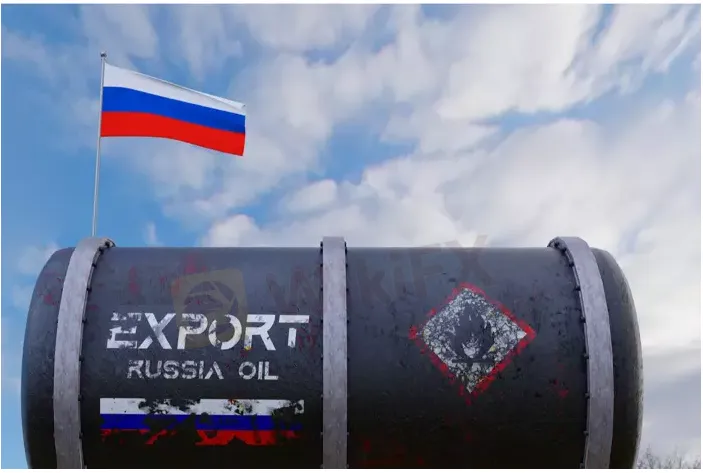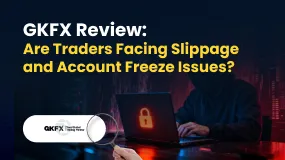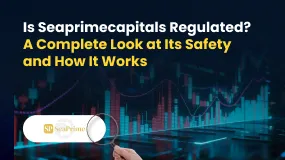简体中文
繁體中文
English
Pусский
日本語
ภาษาไทย
Tiếng Việt
Bahasa Indonesia
Español
हिन्दी
Filippiiniläinen
Français
Deutsch
Português
Türkçe
한국어
العربية
A Price Cap On Russian Oil May Lead To A Massive Rally
Abstract:Russia’s imports from Western countries collapsed due to sanctions, and the country does not need dollars or euros that cannot be used to buy Western goods.

Key Insights
G7 countries try to establish a mechanism that will reduce the price of Russias oil exports.
Meanwhile, Russia is suffering from a strong ruble as imports decline, which means the country does not need too many dollars or euros.
Attempts to impose a price cap on Russian oil may lead to a cut in supplies and push oil prices towards yearly highs.
G7 countries have recently announced their plans to impose a price-capping mechanism on Russian oil to reduce Russia‘s revenues. G7 plans to have a working tool by December 5. As a reminder, that’s when the EU plans to stop most imports of Russian oil.
When asked about the potential price cap, the head of the Russian Central Bank Elvira Nabiullina said that Russia would not sell oil to the countries that had imposed the price cap.
Oil markets ignore the issue and the potential supply problems that can arise from implementing the price cap. WTI oil failed to settle above the $120 level in June and has recently declined towards the $90 level.
However, the topic of the price cap on Russian oil will ultimately have more impact on oil price dynamics.
What Is The Idea Behind The Price Cap?
G7 countries plan to use their financial dominance to ban insurance, transportation and financing of Russian oil exports for countries that buy Russian oil above a specified price.
Some publications discussed a $40-60 price range that will keep Russia interested in producing oil.
To implement the price cap, G7 must create a “cartel of buyers”. If G7 countries are successful and the biggest consumers participate, Russia will face a tough choice. The country will have to either supply oil at a specified price or lose oil revenues, which are vital for its budget.
Russian Oil Exports
In June, Russia‘s oil exports totaled 7.4 million bpd, compared to the average of 7.75 million bpd in January – June. Sanctions have made Russian oil “toxic”, and Russia’s Urals is sold at a material discount to Brent oil.
According to Neste, the current spread between Urals and Brent exceeds $30. As Brent is trading near the $95 level, Russia sells its oil for about $65 per barrel.
In this situation, a price cap set at the $60 level does not look like a big problem for Russia as it is already selling its oil close to this level.
Russian Ruble And Sanctions
USD/RUB touched highs near the 120 level in March when foreign investors rushed out of the country while Russian citizens bought foreign currency in fear of a total financial collapse.
In response, the Russian Central Bank imposed currency controls. Meanwhile, Russias imports dropped due to sanctions. A combination of currency controls and declining imports strengthened the ruble. USD/RUB touched lows at the 50 level in late June before rebounding to 60. The strong ruble is a headache for Russian exporters, while importers cannot benefit from the situation as many potential suppliers cannot sell goods to them due to sanctions.
Russias current problem is the excessive flow of foreign currency. Even worse, the “virtual” money, dollars or euros, can turn to nothing at any time if the sanction war escalates. The Western countries have already frozen the assets of the Russian Central Bank, which is now working hard to minimize the use of dollars and euros inside Russia.
Put simply, Russia does not want too much foreign currency that can be frozen at any time, and that cannot be used to buy goods and services. This is important to understand when we consider the potential reaction to the oil price cap mechanism.
Politics Trumps Economics
The year 2022 is full of examples when countries implemented actions and measures that would hurt them economically if they believed that it was politically important to do so.
There is little reason to think that Russia would look at the oil price cap mechanism as an economic exercise. Most likely, the decision will be purely political.
As we have discussed above, Russia does not need foreign currency that cannot be used to buy goods. As a result, Russia may want to cut exports to countries that participate in the price cap mechanism and sell oil to willing buyers.
In 2021, Russia exported 2.4 million barrels to the EU. Assuming that Russian exports decline by about 4 million barrels in 2023 (extreme scenario), the price of oil may easily settle in the $100 – $150 range or even higher.
Interestingly, the revenue (in rubles, which is important for the Russian budget) that Russia will get by selling 7.4 million bpd at $60 per barrel with USD/RUB at 60 is almost equal to the revenue that Russia will receive by selling 3.4 million bpd at $100 per barrel with USD/RUB at 80. Before February, USD/RUB fluctuated near the 75 level, and the country could afford USD/RUB in the 70 – 90 range without triggering severe inflation.
All in all, it remains to be seen whether the price cap on Russian oil will be successful. To have a real chance for success, G7 will need China to join the deal. Politically, this scenario looks increasingly unlikely after Pelosis visit to Taiwan. China will still get Russian oil at a discount and get a competitive advantage over U.S. and EU if oil rallies towards the $150 level.
From a trading point of view, the attempt to implement the price cap mechanism may lead to a total cut of supplies to participating countries and lead to a massive rally in the oil market. However, traders will have to wait until October – November before markets will start to price in such scenarios.

Disclaimer:
The views in this article only represent the author's personal views, and do not constitute investment advice on this platform. This platform does not guarantee the accuracy, completeness and timeliness of the information in the article, and will not be liable for any loss caused by the use of or reliance on the information in the article.
Read more

Close Up With WikiFX —— Take A Close Look At Amillex
With the rapid growth of global multi-asset investment markets, the differences among regional forex markets have become increasingly significant. As a forex broker information service platform operating in more than 180 countries and regions, WikiFX is dedicated to helping investors in every market identify reliable brokers. Therefore, we have launched an exclusive interview series —— "Close Up With WikiFX", offering in-depth conversations with local brokers. This series aims to dive deep into frontline markets and provide first-hand information, helping investors gain a clearer and more comprehensive understanding of quality brokers.

Seacrest Markets Exposed: Are You Facing Payout Denials and Spread Issues with This Prop Firm?
Seacrest Markets has garnered wrath from traders owing to a variety of reasons, including payout denials for traders winning trading challenges, high slippage causing losses, the lack of response from the customer support official to address withdrawal issues, and more. Irritated by these trading inefficiencies, a lot of traders have given a negative review of Seacrest Markets prop firm. In this article, we have shared some of them. Take a look!

GKFX Review: Are Traders Facing Slippage and Account Freeze Issues?
Witnessing capital losses despite tall investment return assurances by GKFX officials? Do these officials sound too difficult for you to judge, whether they offer real or fake advice? Do you encounter slippage issues causing a profit reduction on the GKFX login? Is account freezing usual at GKFX? Does the United Kingdom-based forex broker prevent you from accessing withdrawals? You are not alone! In this GKFX review guide, we have shared the complaints. Take a look!

Is Seaprimecapitals Regulated? A Complete Look at Its Safety and How It Works
The straightforward answer to this important question is no. Seaprimecapitals works as a broker without proper regulation. This fact is the most important thing any trader needs to know, because it creates serious risks for your capital and how safely the company operates. While this broker offers some good features, like the popular MetaTrader 5 platform and a low starting deposit, these benefits cannot make up for the major risks that come from having no real financial supervision. This article will give you a detailed, fact-based look at Seaprimecapitals regulation, what the company claims to do, the services it provides, and the clear differences between official information and user reviews. Our purpose is to give you the information you need to make a smart decision about the risks and benefits of working with this company.
WikiFX Broker
Latest News
Simulated Trading Competition Experience Sharing
WinproFx Regulation: A Complete Guide to Its Licensing and Safety for Traders
Interactive Brokers Expands Access to Taipei Exchange
Axi Review: A Data-Driven Analysis for Experienced Traders
INZO Regulation and Risk Assessment: A Data-Driven Analysis for Traders
Cleveland Fed's Hammack supports keeping rates around current 'barely restrictive' level
Delayed September report shows U.S. added 119,000 jobs, more than expected; unemployment rate at 4.4%
The CMIA Capital Partners Scam That Cost a Remisier Almost Half a Million
eToro Cash ISA Launch Shakes UK Savings Market
Is Seaprimecapitals Regulated? A Complete Look at Its Safety and How It Works
Currency Calculator



